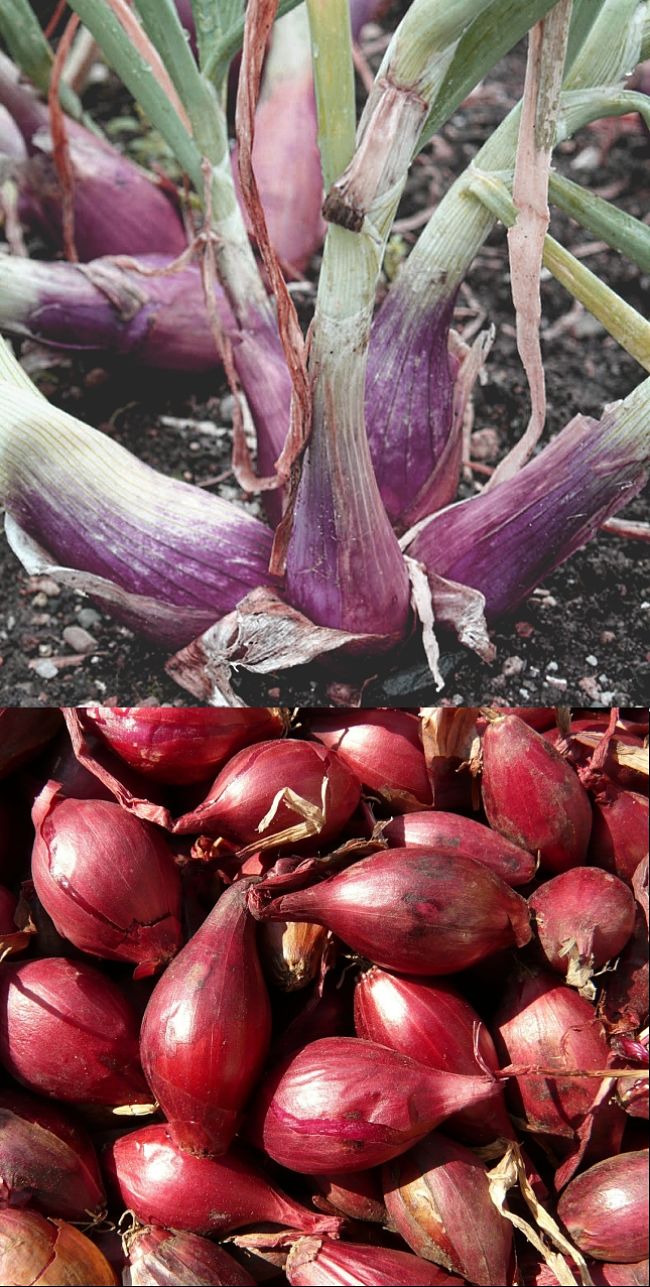Planting and Growing Guide for Eschalots (Allium cepa, aggregatum)
Description
Eschalots, also known as Shallots, have a garlic like form developing a clump of bulbs at the base of the stem. The base of the shallot generally has about twelve bulbs lightly clustered together. They are quite different from Spring onions which only have single bulbs. The leaves are tubular like an onion, but are shorter and thinner. They are very popular in French dishes. Eschalots are propagated by planting the small bulbs produced from the main plant. Once Eschalots are established in your garden you can propagate them from year to year by saving a few bulb cluster at the end of each growing season. To plant Eschalots in batches in autumn (fall), four to six weeks prior to when the first frost is expected. Eschalots can also be planted in the spring two weeks before the last frost is expected for a summer harvest. Shallots plant to be harvested in winter will be larger. Eschalots do best when grown in rich, light, well-drained soil. Shallots may rot in heavy wet soils. Eschalots can be grown in pots and other containers. There are many varieties available, so choose the one that does best in your area and climate.
Eschalots can replace onions in most recipes. They can be cooked whole, by steaming or by braising gently with other vegetables. They can be used in stir-fry dishes and can be baked or grilled lightly. They can also be eaten raw and added to salads. They can be pickled and used to make chutneys and sauces. They can be stored for more than 12 months.
Planting Guide
Seed Depth: Plant small bulbs directly into the garden with the stems just protruding above ground. Best planted in warm weather.
Space between plants: Space plants about 15-20 cm (6-9 inches) apart.
Harvest Time: Harvest in about 12-15 weeks, but small bulbs can be harvested as the plant grows
Hints:
- Does best in full sun in cooler areas, but can grow in partially shaded areas
- Do not plant too close together as crowding will reduce growth
- Water frequently to keep the plants growing steadily.
- Cover the soil around the plants with mulch to retain soil moisture
- Keep the plants growing by feeding regularly to increase yield and improve the flavor
- Harvest the shallots before flowering, when the tops start to topple over.
- Does best in deep, rich, well-drained soil with neutral to slightly acid pH

Disclaimer: The PlantWhatWhen vegetable planting guide is only designed for use as a very general reference for home gardening purposes. It is not to be used for farming, markets or commercial activities of any kind whatsoever. We take absolutely no responsibility for the accuracy and adequacy of the information provided on this site. We recommend that you consider your local climate, weather patterns and conditions when deciding what and when to plant in your home garden. It's entirely your own decision. Happy Gardening and Best Wishes!